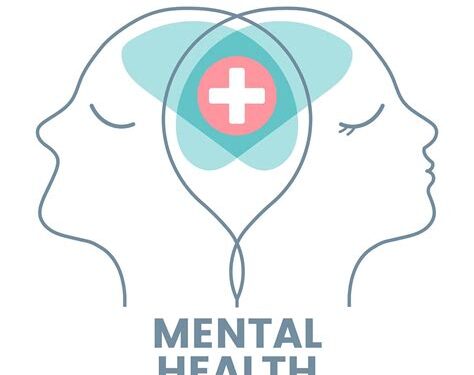Mental health remains one of the most pressing yet misunderstood topics of our time. Despite significant advances in treatment and a growing body of research, the stigma attached to mental health issues continues to hinder individuals from seeking help and embracing their struggles openly. This article explores the evolution of mental health perceptions, the origins of stigma, its impacts on personal and societal levels, and practical strategies to dismantle harmful stereotypes. By delving into historical context, current trends, and future directions, we aim to provide a comprehensive overview that educates, empowers, and encourages dialogue.
Mental health is an integral part of overall well-being. It influences how we think, feel, and act, affecting our ability to handle stress, relate to others, and make decisions. However, the conversation around mental health has been marred by prejudice, misinformation, and discrimination. The phrase “breaking the stigma” signifies the urgent need to challenge outdated beliefs and to create an environment where mental health is treated with the same respect and care as physical health.
In this article, we examine: A. The evolution of mental health perceptions
B. The historical and cultural roots of stigma
C. The impact of stigma on individuals and communities
D. Effective strategies for breaking the stigma surrounding mental health
E. The role of education, media, and policy in transforming public perception
Our journey begins by understanding the origins and evolution of the stigma attached to mental health, exploring how misconceptions have taken root over centuries.
The Evolution of Mental Health Perceptions
Historically, mental illness was often misunderstood, with symptoms attributed to supernatural forces, moral failings, or personal weakness. In ancient societies, mental disturbances were sometimes seen as a spiritual crisis or a punishment from the gods. Over time, however, the medical community began to recognize that mental health issues, like physical ailments, have biological, psychological, and environmental determinants.
The progression in understanding mental health can be broadly divided into several eras:
A. Ancient and Medieval Views:
- In many ancient cultures, unusual behavior was interpreted through the lens of religion or superstition.
- Individuals with mental illnesses were often isolated or subjected to harsh treatments based on spiritual or punitive reasoning.
B. The Enlightenment and Early Psychiatry:
- The rise of rational thought during the Enlightenment brought about more humane approaches to mental illness.
- Pioneers in early psychiatry began to advocate for treatment methods that acknowledged mental health as a medical condition rather than a moral failing.
C. Modern Developments:
- The 20th century witnessed significant breakthroughs in psychology, neuroscience, and pharmacology, transforming the treatment of mental disorders.
- Public health campaigns and advocacy movements further highlighted the importance of mental health, though remnants of old stigmas continue to linger.
Despite these advances, many individuals still face barriers in accessing care due to lingering stereotypes that equate mental illness with unpredictability or weakness.
The Roots of Stigma
Stigma is a complex social construct that arises from fear, misunderstanding, and cultural narratives. Several factors contribute to the persistence of stigma around mental health:
A. Historical Misconceptions:
- For centuries, mental health issues were linked to supernatural or moral deficiencies, creating a legacy of shame.
- Early medical theories often oversimplified the causes of mental illness, leading to generalized and inaccurate beliefs.
B. Media Representation:
- Movies, television shows, and news reports have historically portrayed individuals with mental illnesses as dangerous or unstable, reinforcing negative stereotypes.
- Sensationalist reporting on mental health crises can exacerbate public fear and misunderstanding.
C. Lack of Public Education:
- Many communities have limited access to accurate information about mental health, leading to myths that persist over time.
- Educational programs in schools and workplaces are often insufficient to counteract the deep-rooted misconceptions.
D. Social and Cultural Factors:
- Cultural attitudes toward mental health vary widely, with some societies more open to discussing these issues while others consider them taboo.
- Religious and societal norms can discourage individuals from acknowledging or seeking help for mental health struggles.
E. Economic and Political Influences:
- Funding for mental health research and services often lags behind that for physical health, further marginalizing mental health concerns.
- Policies that inadvertently discriminate against individuals with mental illnesses contribute to a cycle of exclusion and misunderstanding.
Understanding these roots is essential to dismantling the stigma. By confronting each factor head-on, we can begin to shift the narrative and promote a more inclusive and empathetic society.
Impact of Stigma on Individuals and Society
The consequences of mental health stigma are profound and multifaceted. On a personal level, stigma can lead to feelings of shame, isolation, and hopelessness. It discourages individuals from seeking help, which can exacerbate symptoms and delay recovery. The societal implications are equally significant, influencing public health outcomes, economic productivity, and community cohesion.
Personal Impact
Individuals facing mental health stigma may experience:
A. Emotional Distress:
- Feelings of worthlessness and self-doubt are common, often leading to anxiety and depression.
- The internalization of negative stereotypes can hinder self-esteem and self-acceptance.
B. Reluctance to Seek Treatment:
- Fear of judgment or discrimination may prevent individuals from accessing therapy or medical care.
- Delayed treatment can result in more severe mental health issues and prolonged suffering.
C. Social Isolation:
- Stigma can lead to withdrawal from social interactions, reducing support networks and increasing loneliness.
- The fear of being labeled or ostracized makes it difficult to build and maintain relationships.
D. Economic Hardship:
- Individuals with untreated mental health issues may face challenges in the workplace, including discrimination and reduced productivity.
- The cost of untreated mental illness can be significant, both in terms of lost income and increased healthcare expenses.
Societal Impact
On a broader scale, the stigma surrounding mental health affects society in several ways:
A. Public Health Challenges:
- High rates of untreated mental illness contribute to increased healthcare costs and burden public health systems.
- Communities with significant mental health challenges often see higher rates of substance abuse and related social issues.
B. Economic Consequences:
- Reduced workforce participation and lower productivity among individuals with untreated mental health conditions can slow economic growth.
- Employers may incur additional costs due to absenteeism and decreased job performance.
C. Social Fragmentation:
- Stigmatization divides communities, creating an “us versus them” mentality that hinders social integration.
- The lack of open dialogue about mental health prevents collective efforts to address and resolve underlying issues.
D. Policy and Resource Allocation:
- Insufficient funding and support for mental health services stem partly from societal indifference and stigma.
- Public policies may fail to adequately address the needs of those with mental health challenges, perpetuating the cycle of neglect.
The personal and societal costs of stigma are immense, emphasizing the urgent need for comprehensive strategies to combat these harmful perceptions.
Strategies for Breaking Mental Health Stigma
Addressing the stigma surrounding mental health requires a multifaceted approach that involves education, policy changes, media reform, and community engagement. By implementing strategies at various levels, we can foster a culture of empathy and support.
Public Education and Awareness
A. Comprehensive Mental Health Education:
- Integrate mental health education into school curriculums from an early age to normalize discussions and understanding.
- Offer community seminars and workshops that provide accurate information and dispel common myths.
B. Campaigns and Public Service Announcements:
- Use social media, television, and public events to launch campaigns that humanize mental health issues and highlight recovery stories.
- Encourage celebrities, influencers, and community leaders to share personal experiences to reduce the sense of isolation.
C. Training for Healthcare Providers:
- Equip medical professionals with the knowledge and empathy necessary to treat mental health issues without bias.
- Encourage the adoption of trauma-informed care practices that recognize the complexity of mental health struggles.
Media Representation
A. Accurate Portrayals:
- Advocate for responsible media reporting that avoids sensationalism and instead focuses on factual, empathetic stories.
- Encourage media outlets to highlight stories of resilience and recovery, rather than solely focusing on crises.
B. Collaboration with Experts:
- Engage mental health professionals in the production of media content to ensure accurate and sensitive representation.
- Develop guidelines for journalists on how to report on mental health topics without perpetuating stereotypes.
Policy and Workplace Initiatives
A. Legislative Reforms:
- Advocate for policies that provide comprehensive mental health coverage and support services.
- Implement anti-discrimination laws that protect individuals with mental health issues in all areas of life, including employment and education.
B. Workplace Wellness Programs:
- Encourage businesses to establish programs that support mental well-being, such as counseling services, stress management workshops, and flexible work arrangements.
- Create an inclusive work culture where employees feel safe discussing mental health without fear of judgment.
C. Community-Based Support Networks:
- Develop local support groups that provide safe spaces for individuals to share their experiences and support one another.
- Partner with non-profit organizations to create outreach programs that extend mental health resources to underserved communities.

Personal Empowerment and Self-Care
A. Seeking Professional Help:
- Normalize the process of reaching out to mental health professionals, including therapists, counselors, and support groups.
- Emphasize that seeking help is a sign of strength and a proactive step toward recovery.
B. Self-Care Practices:
- Encourage individuals to engage in activities that promote mental well-being, such as mindfulness, exercise, and hobbies.
- Develop personalized routines that include adequate rest, healthy nutrition, and social connection.
C. Building Resilience:
- Teach coping strategies and resilience-building techniques through workshops and educational programs.
- Provide resources that help individuals manage stress and navigate challenging situations effectively.
The Role of Media and Public Discourse
Media and public discourse play critical roles in shaping how society views mental health. When these channels promote understanding and empathy, they can drive significant change.
Changing the Narrative
A. Humanizing Mental Health:
- Stories that feature real-life experiences of those who have faced mental health challenges can dismantle stereotypes and encourage empathy.
- By sharing narratives of recovery and resilience, the media can demonstrate that mental health issues are part of the human experience and not a sign of personal failure.
B. Promoting Inclusivity:
- Media outlets should strive to include diverse perspectives, ensuring that stories reflect various cultural, economic, and social backgrounds.
- Inclusive storytelling helps to break down barriers and fosters a broader understanding of mental health challenges.
Guidelines for Responsible Reporting
A. Avoiding Sensationalism:
- Journalists should prioritize accuracy over drama, avoiding language that may inadvertently reinforce negative stereotypes.
- Emphasize context and expert opinions to provide a balanced view of mental health issues.
B. Consulting Experts:
- Media producers should engage mental health experts when covering sensitive topics to ensure that information is both accurate and compassionate.
- Expert consultations can help guide the narrative toward constructive and informative storytelling.
C. Fostering Open Dialogue:
- Platforms that encourage public discussion about mental health can help reduce stigma by normalizing conversations.
- Forums, talk shows, and social media initiatives that invite experts and community members to share insights contribute to a more informed public.
Cultural Perspectives and Global Impact
Cultural context plays a significant role in how mental health is perceived and addressed. Different societies have unique challenges and strengths when it comes to supporting mental well-being.
Cultural Variations in Stigma
A. Western Versus Non-Western Approaches:
- In many Western cultures, mental health discussions have become more mainstream, though challenges persist regarding access to services and quality of care.
- Non-Western societies may face greater challenges due to deep-rooted cultural beliefs that view mental illness as a taboo subject.
B. Community and Collective Support:
- Some cultures place a high value on community and familial support, which can be beneficial for mental health. However, such close-knit structures can also lead to heightened concerns about reputation and honor, making it harder for individuals to seek help.
- Community-led initiatives that respect cultural traditions while promoting modern mental health practices can bridge the gap between tradition and progress.
C. Religious and Spiritual Influences:
- Religious teachings and spiritual practices can both support and hinder mental health awareness.
- Many faith communities are beginning to integrate mental health education into their practices, offering counseling and support services that align with their values.
Importance of Mental Health Education
Education is a cornerstone in the fight against mental health stigma. By providing accurate information and debunking myths, educational initiatives empower individuals to understand and support mental well-being.
Key Educational Strategies
A. Curriculum Integration:
- Schools and universities should include comprehensive mental health education as part of their curriculum.
- This education should cover the biological, psychological, and social aspects of mental health, offering students a well-rounded perspective.
B. Public Workshops and Seminars:
- Community centers and local organizations can host seminars led by mental health professionals.
- These workshops can cover topics such as stress management, coping skills, and the importance of early intervention.
C. Online Resources and E-Learning:
- Digital platforms provide accessible information on mental health topics, including articles, videos, and interactive modules.
- E-learning courses can help dispel myths and offer practical advice for managing mental health challenges.
Benefits of Enhanced Awareness
A. Early Detection and Intervention:
- Educated communities are better equipped to recognize the early signs of mental health issues and to seek help promptly.
- Early intervention can significantly improve outcomes and reduce the long-term impact of mental illness.
B. Reduction in Discrimination:
- With greater awareness comes increased empathy, which can lead to a reduction in social stigma and discrimination.
- An informed public is less likely to perpetuate harmful stereotypes and more likely to support inclusive policies.
C. Empowered Individuals:
- Education empowers individuals to advocate for their own mental health and to support others in their community.
- Empowered communities create a positive feedback loop, where understanding and support reinforce one another.
Personal Stories of Overcoming Stigma
The narratives of those who have faced and overcome mental health challenges provide powerful insights into the human spirit. These stories not only inspire others but also serve as evidence that recovery is possible even in the face of overwhelming societal stigma.
Common Themes in Recovery
A. Resilience and Determination:
- Many individuals attribute their recovery to a persistent belief in their ability to overcome adversity.
- Stories often highlight the importance of resilience in navigating the ups and downs of mental health challenges.
B. Support Systems:
- Family, friends, and community networks play an essential role in the journey toward mental wellness.
- The willingness of loved ones to listen and provide support can make all the difference in recovery.
C. Access to Professional Help:
- Professional guidance from therapists, counselors, and support groups often serves as a turning point for those battling stigma.
- The trust and expertise offered by mental health professionals create a safe space for healing.

Illustrative Narratives
Consider the following scenarios that represent the diverse experiences of individuals across different walks of life:
A. The Student’s Journey:
- A college student grappling with anxiety finds solace in campus support groups and counseling services. Over time, the student becomes an advocate for mental health awareness on campus, sharing personal experiences to inspire peers.
B. The Working Professional:
- An executive facing burnout learns to balance high-pressure responsibilities with self-care practices. Through therapy and workplace support programs, the individual transforms stress into a catalyst for positive change.
C. The Retired Individual:
- A retiree battling depression discovers that reconnecting with old hobbies and participating in community activities reignites a sense of purpose. Support from local mental health initiatives helps the individual rediscover joy in everyday life.
These stories underscore that breaking the stigma of mental health is not a one-size-fits-all endeavor but a personal journey enriched by community and professional support.
Future Directions in Mental Health
As society continues to evolve, the future of mental health care and public perception holds promise. Several key areas of development are poised to redefine how we approach mental well-being.
Technological Innovations
A. Teletherapy and Digital Platforms:
- Advances in telemedicine have made mental health services more accessible, particularly for those in remote or underserved areas.
- Digital platforms offer anonymous support, connecting individuals with therapists and peer support communities online.
B. Mobile Health Applications:
- Smartphone apps focused on mental wellness, mindfulness, and mood tracking provide users with tools to manage their mental health daily.
- These applications can serve as early warning systems, alerting users to potential issues and offering resources for intervention.
Policy and Advocacy
A. Increased Funding:
- Governments and private sectors are increasingly recognizing the economic and social costs of untreated mental illness, leading to more robust funding for research and services.
- Legislative reforms that promote mental health parity in insurance coverage are critical in ensuring access to necessary care.
B. Community-Led Initiatives:
- Grassroots movements continue to gain momentum, with local communities spearheading campaigns to raise awareness and reduce stigma.
- Collaboration between non-profit organizations, mental health professionals, and policymakers can lead to more inclusive and effective mental health policies.
Research and Development
A. Innovative Therapies:
- Ongoing research in neuroscience, genetics, and psychology is paving the way for new, personalized treatment options.
- Emerging therapies that integrate technology with traditional practices show promise in enhancing the efficacy of mental health care.
B. Cross-Disciplinary Collaboration:
- Combining insights from fields such as sociology, education, and public policy enriches our understanding of mental health challenges and potential solutions.
- Interdisciplinary research fosters a holistic approach, ensuring that interventions address both biological and socio-cultural factors.
Conclusion
Breaking the stigma surrounding mental health is not just an act of social justice; it is a critical step toward fostering a healthier, more inclusive society. As we have explored in this article, the roots of stigma are deeply entrenched in history, culture, and misrepresentation. However, through education, responsible media practices, community engagement, and supportive policies, we can transform the narrative around mental health.
By embracing a comprehensive approach that includes public education, policy reform, and personal empowerment, society can move away from outdated prejudices and toward a future where mental health is respected, understood, and prioritized. The journey to dismantling stigma is ongoing, but each step taken toward understanding and compassion brings us closer to a world where mental health care is accessible, effective, and free from judgment.
Let this article serve as a call to action: to educate, to advocate, and to support those who struggle with mental health issues. Only by breaking the stigma can we unlock the true potential of a compassionate society—one that values every individual and recognizes that mental health is a universal human experience.












